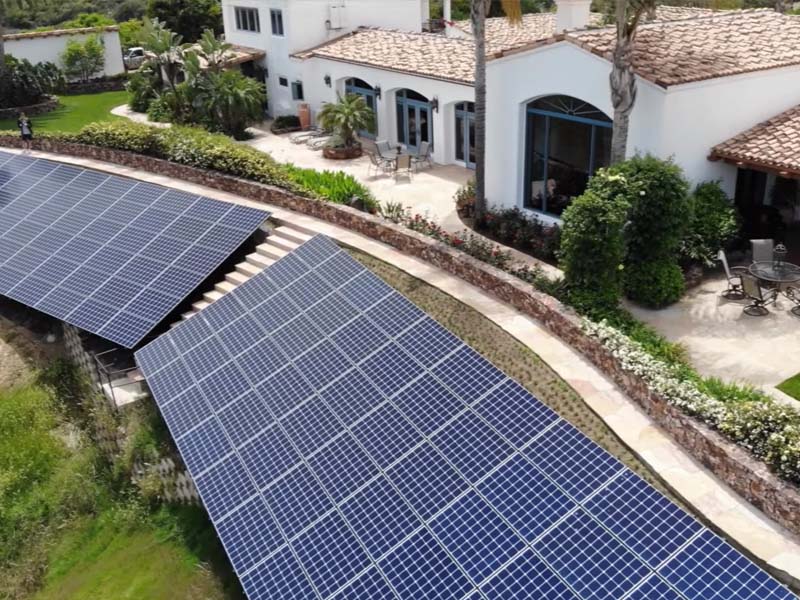
Personalized Energy: Custom Energy Solutions for Households
In today’s modern world, where sustainability and self-sufficiency have become more than mere buzzwords, the concept of “Personalized Energy” emerges as a beacon of hope. As we look into our homes and communities, we find an inspiring movement towards energy solutions that reflect individual needs and values.
Historical Context
Historically, households have depended on centralized energy sources—large power plants that distribute electricity over vast areas. However, with advances in technology and a shift towards sustainability, the 21st century sees a move from these centralized giants to more decentralized, home-based solutions.
The Rise of Home-based Renewable Sources
Solar: Gone are the days when solar panels were large, cumbersome, and only for the dedicated few. DIY solar solutions, solar-integrated home designs (like solar roofs and windows), are making this energy source more accessible.
Wind: Small, efficient wind turbines designed for individual homes provide another avenue for clean energy. Their designs have evolved, making them less obtrusive and more efficient.
Hydropower: For those situated near flowing water, miniaturized turbines offer a constant energy supply, harnessing the age-old power of water flow.
Energy Storage Solutions for Homes
Battery technology
Products like the Tesla Powerwall have revolutionized home energy storage. Beyond batteries, the future promises even more innovative solutions to store energy at home.
Other storage solutions
Mechanical options, like flywheels, and thermal storage methods ensure energy is available when needed, maximizing the benefits of renewable sources.
Energy Management and Home Automation
The rise of the smart home has a dual benefit. Not only do homeowners enjoy the conveniences of automation, but this tech-savvy approach has substantial energy efficiency merits. IoT devices provide detailed energy monitoring, while AI-driven solutions optimize usage based on need, weather, and other factors.
Benefits of Personalized Energy
Economic Advantages: Over time, homeowners can see significant cost savings, not to mention the potential revenue from selling excess energy back to the grid.
Environmental Impact: With every home that turns to renewable sources, our collective carbon footprint diminishes, and our reliance on fossil fuels decreases.
Self-sufficiency and resilience: Being energy independent means fewer worries about grid outages and a heightened sense of energy security.
Challenges and Considerations
Adopting personalized energy is not without its hurdles. The initial costs can be daunting, and homeowners must grapple with maintenance, technical understanding, and potential geographic limitations. Additionally, local regulations can pose challenges, requiring navigation and understanding.
Case Studies
Several households globally have fully embraced the ethos of personalized energy:
- In Sweden, the Larsson family utilizes a combination of solar panels and home-based wind turbines, achieving nearly 80% energy self-sufficiency;
- The Kumars in India have harnessed the power of their local stream with a miniaturized turbine, making them entirely off-grid.
Such real-world applications provide both inspiration and a roadmap for others on this journey.
The Future of Personalized Energy
As we gaze into the next decade, personalized energy’s horizon seems bright. Emerging technologies promise even more efficient storage and collection methods. The move toward such solutions is not just a trend—it’s a revolution in how we perceive and consume energy.
Can a home be fully self-contained?
A home can strive to be fully self-contained, often referred to as “off-grid living”, but achieving this requires careful planning, investment, and often a willingness to adapt one’s lifestyle. Here’s what needs to be considered:
Energy:
- Solar panels: Capture sunlight and convert it into electricity. They are often paired with battery storage systems to provide power during nighttime or cloudy days;
- Wind turbines: Especially effective in windy regions;
- Hydroelectric: Suitable if you have a running water source nearby;
- Backup generators: Typically powered by propane or diesel, they can provide electricity during extended periods without sun or wind.
Water:
- Rainwater harvesting: Collecting rain from rooftops and storing it in cisterns;
- Wells: Drilling into the ground to access groundwater;
- Water purification: Regardless of the source, water must be treated and purified to ensure it’s safe for drinking;
- Graywater systems: Reusing water from sinks and showers for irrigation or toilet flushing.
Waste Management:
- Recycling: Managing your waste by separating recyclables.
Biogas generators: Convert organic waste into methane for cooking or heating; - Waste reduction: Minimizing waste generation by purchasing bulk items, reusing, and upcycling.
Food:
- Gardening: Growing vegetables, fruits, and herbs;
- Animal husbandry: Raising chickens for eggs, cows for milk, or other livestock;
- Aquaponics & Hydroponics: These systems combine fish farming with hydroponic plant cultivation, optimizing space and resources;
- Preservation: Canning, fermenting, and drying foods to ensure availability throughout the year.
Heating/Cooling:
- Passive solar design: Designing the house to take advantage of the sun’s energy for heating;
- Earth-sheltered homes: Homes built into the earth naturally benefit from its insulating properties, staying warmer in winter and cooler in summer.
Wood-burning stoves or fireplaces:
Natural ventilation: Strategically placing windows and vents to take advantage of natural breezes.
Connectivity:
Satellite internet: For places where traditional broadband isn’t available.
Ham or shortwave radio: For long-distance communication in very remote areas.
Maintenance:
Regularly maintaining all systems, from energy generators to water purifiers, is essential to ensure longevity and reliability.
Summary
Personalized energy is more than an individual endeavor—it’s a collective stride towards a brighter, cleaner, and more self-sufficient future. The invitation stands for each of us: to consider, explore, and perhaps adopt our very own personalized energy solutions